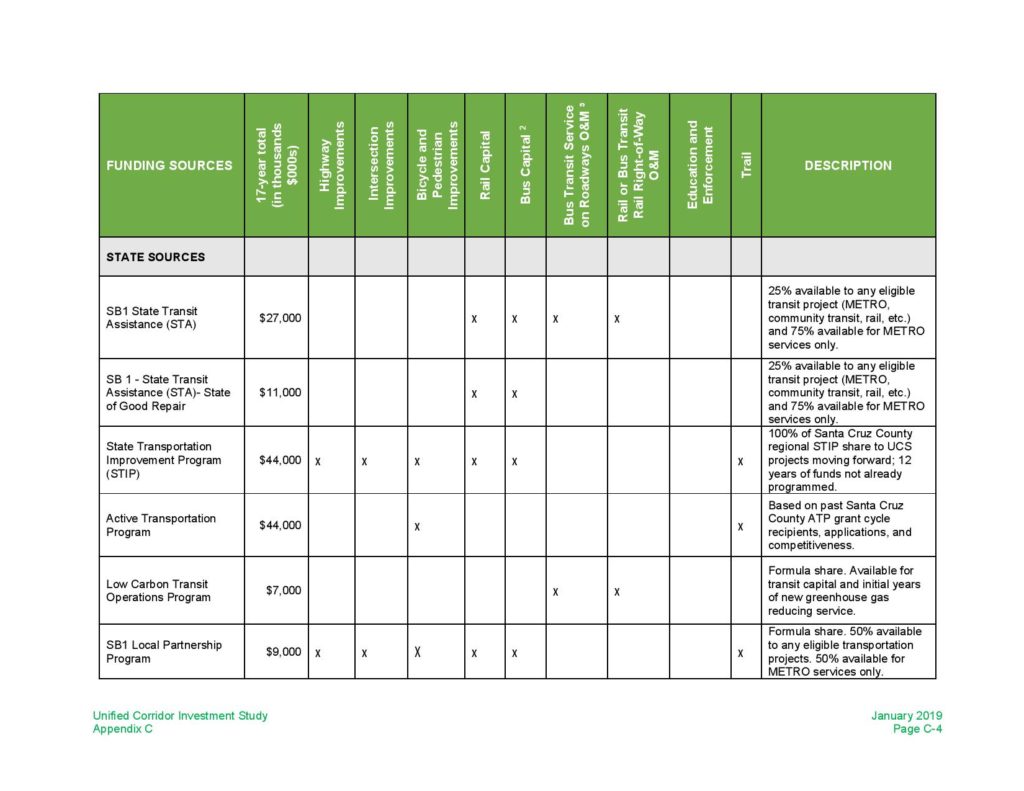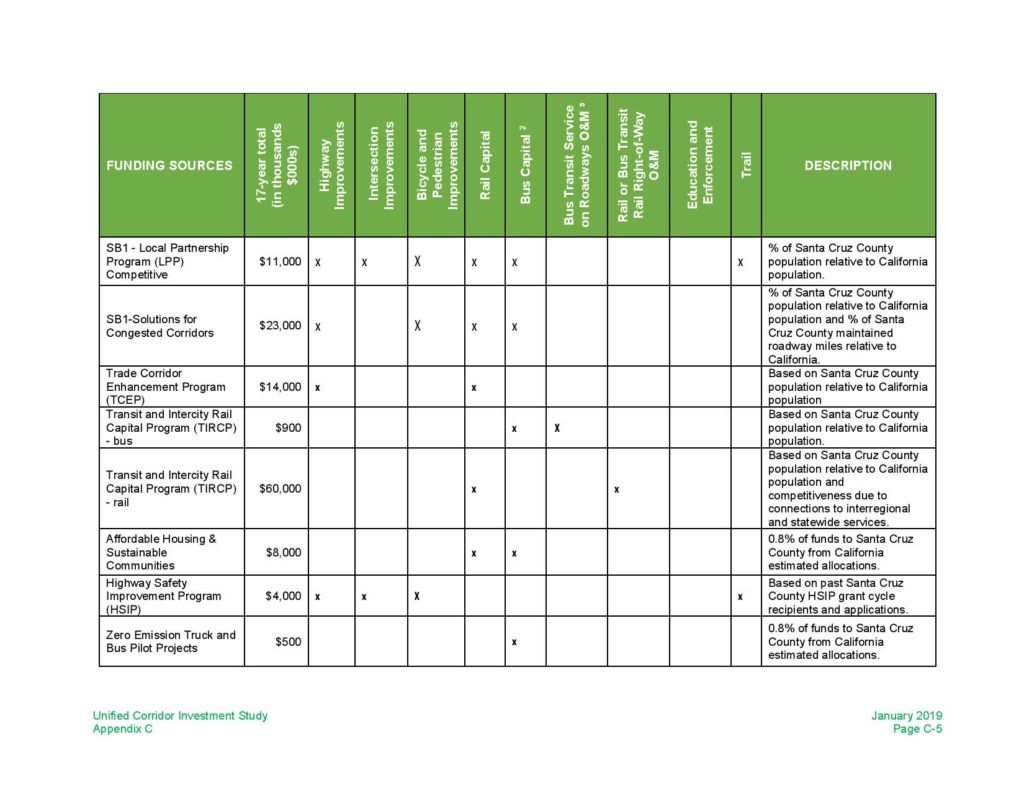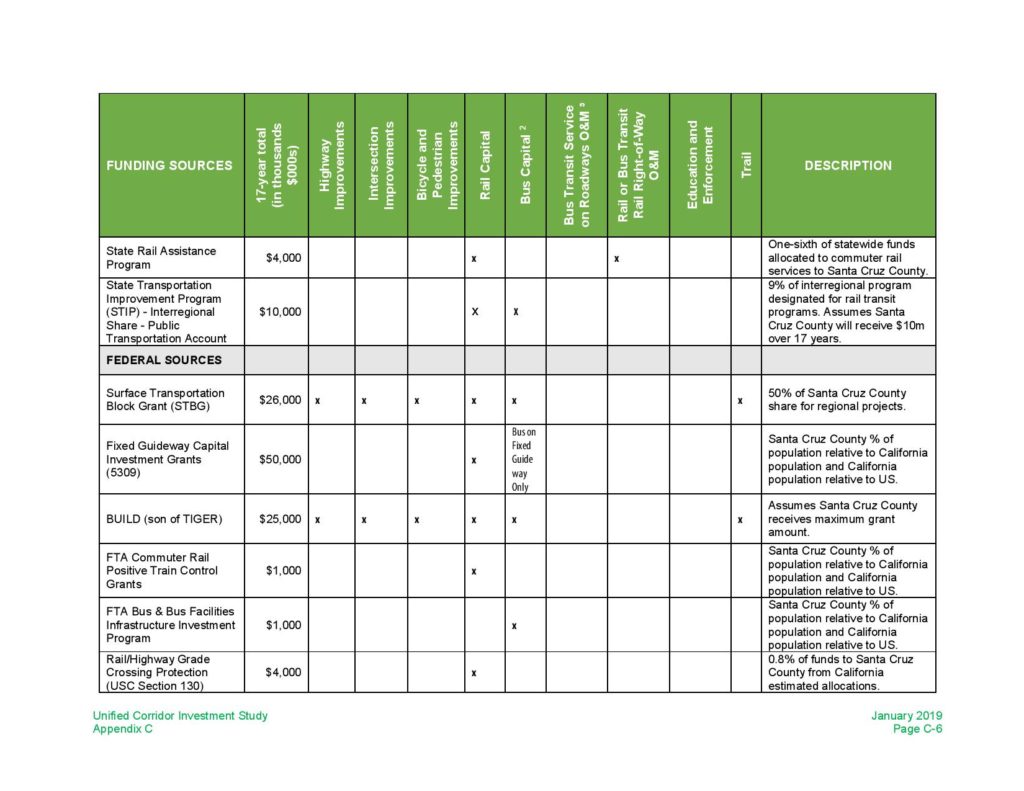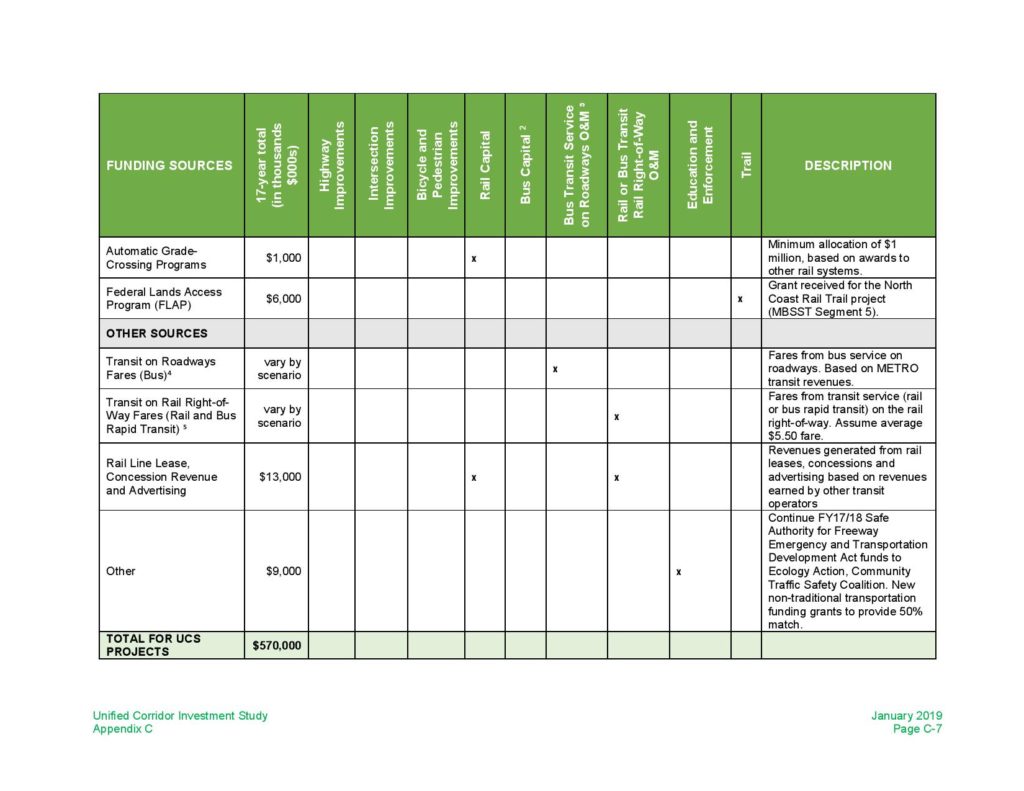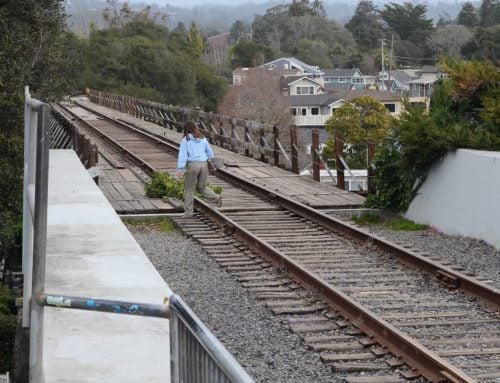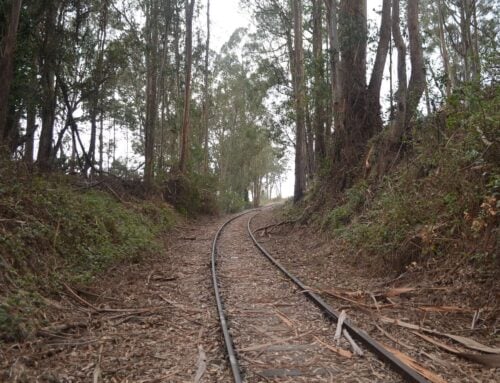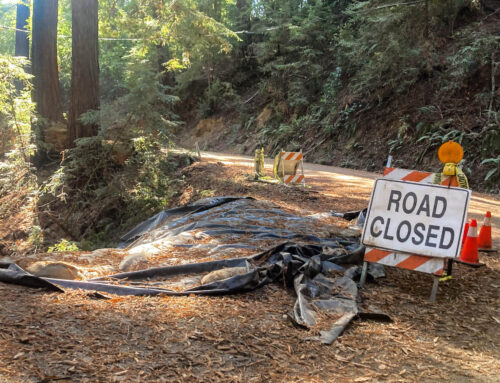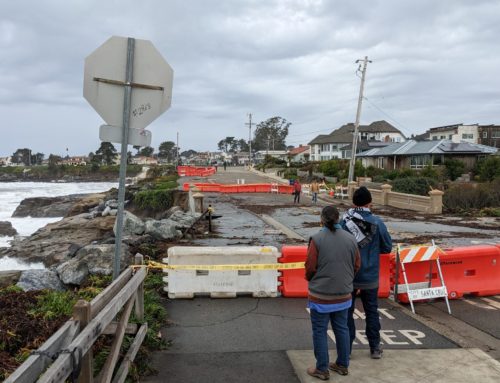Santa Cruz Local offers this explainer on the county’s Transit Corridor Alternatives Analysis free as a public service. But journalism can be expensive — and deep, time-consuming, investigative journalism is the most expensive.
Santa Cruz Local depends on memberships from people like you to make sure vital information can be available to all. Can we count on your help?
SANTA CRUZ >> One transit option from four final contenders for the Watsonville-to-Santa Cruz rail corridor is expected to be recommended by Santa Cruz County Regional Transportation Commission staff in October. The decision could shape the future for Santa Cruz County commuters for years to come.
The recommendation comes from these options:
- a bus
- an autonomous train on wheels, similar to a bus
- an electric commuter train
- an electric light rail
Detailed cost estimates also will be included in the transportation commission’s “virtual open house” Oct. 3 to 20. The public will be able to comment on the options at the open house. It’s a significant step in nearly two years of analysis of transit options for the rail corridor.
“This is a data driven study,” said Guy Preston, executive director of the Regional Transportation Commission, about the analysis. “We’re trying to present this in a way that speaks to the data.”
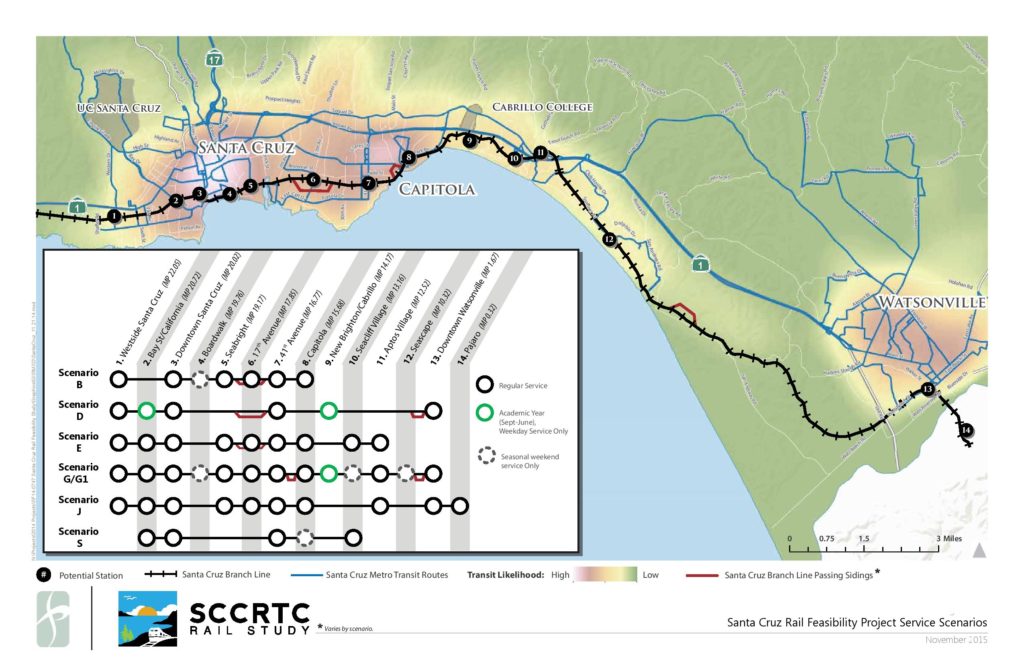
After public input is gathered, transportation commission staff plan to present their final recommendation to Regional Transportation Commissioners in December. In January, the commissioners are expected to vote on a final choice.
Choice criteria
Transportation commission staff use economic, environmental, social equity and other criteria to evaluate transit options on the rail corridor.
- Fiscally feasible: Capital costs, operations, maintenance and available funding
- Results in a well-integrated transportation system that supports “economic vitality” such as transit-oriented development, jobs, freight and other rail businesses.
- Safety
- Accessible and equitable transportation system that is responsive to all users’ needs
- Offers reliable and efficient transportation choices that serve the most people. Considers travel time and reliability
- Promotes a healthy environment, including considerations for noise and vibration that may impact surrounding neighborhoods.
Watsonville Mayor Pro Tempore Trina Coffman-Gomez represents Watsonville on the transportation commission. She said that South County residents are “chomping at the bit” for public transit along the rail corridor.
“We have South County [residents] on the road for two hours a day,” Coffman-Gomez said. “We need to be able to offer these services to provide them with a better quality of life than sitting in a car and commuting.”
How we got here
- October 2012: The Regional Transportation Commission purchased the rail line from Union Pacific for $14.2 million. About $11 million came from the state to support development of passenger rail service. If a transit option is selected that doesn’t use the rail, those funds must be returned to the state.
- January 2019: The 12 voting members of the transportation commission unanimously approved a high-capacity public transit option to accompany a multi-use trail within the rail corridor. Prior options had included a “trail-only” plan, a rail-and-trail plan, or a trail with bus service.
- June 2020: Approval of public transit kicked off another study: the Transit Corridor Alternatives Analysis that started in January 2020. It narrowed 25 potential transit options to four alternatives that were approved in June: bus, electric commuter train, electric light rail, and an autonomous train on wheels. The selection of the four options was informed by two earlier public open houses and a survey.
- October 2020: The upcoming open house is the third major milestone of the Transit Corridor Alternatives Analysis. It’s the first time that more detailed information about cost will be available for the four options. Based on staff analysis, a staff-preferred option will be presented for public comment.
- January 2021: After commissioners review public input gathered at the October open house, commissioners will vote on whether to approve the staff recommendation.
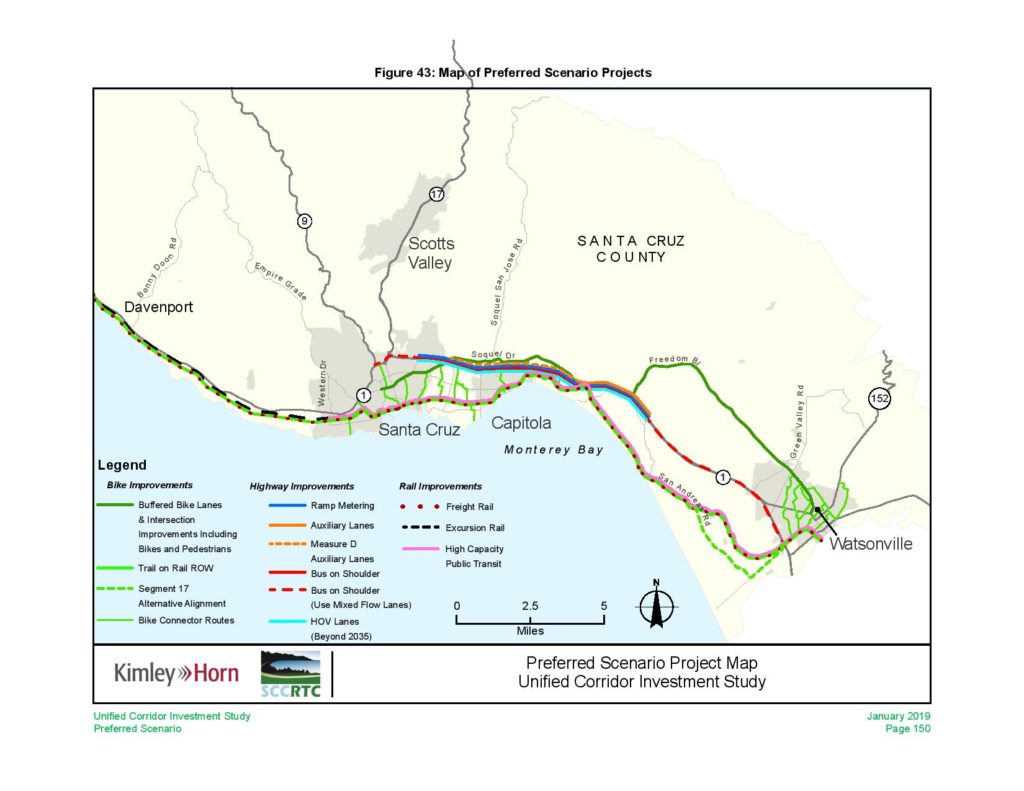
Santa Cruz County Supervisor John Leopold, who spearheaded the public purchase of the rail corridor in 2012, said the commission’s choice likely will have supporters and detractors. Leopold and the other four Santa Cruz County supervisors serve on the Regional Transportation Commission.
“There’s nothing more controversial in this town than transportation,” Leopold said in an interview. “And the [transportation commission] voted unanimously to have both transit and trail in the corridor.”
The annual costs of maintaining roads in the county ranges in the tens of millions of dollars, Leopold said. Replacing a highway overpass, such as the 41st Avenue bridge over Highway 1 in 2007, cost about $100 million, he said. “You have to understand that transportation infrastructure is expensive.”
Manu Koenig is Leopold’s challenger in the Santa Cruz County District 1 election Nov. 3. He is the former executive director of the trail-only advocacy group Santa Cruz County Greenway, and he has made his opposition of rail transit on the corridor a primary campaign issue.
“We want to see something built as soon as possible,” Koenig said in an interview. “A train on steel tracks is going to be the most expensive and the most restrictive use [of the corridor].” Koenig added that he’s “absolutely” in favor of buses on the corridor — which is a departure from some of Greenway supporters’ preference of trail only.
If elected, Koenig said he wants to persuade other county supervisors to support a potential 2022 ballot measure to revisit a trail-only alternative. If adopted, it would derail a project he argues is unaffordable and infeasible. “I say, let’s start by fixing METRO,” Koenig said, referring to the county’s bus system.
Sally Arnold, the executive director of the advocacy group Santa Cruz County Friends of the Rail and Trail, said a rail or bus line alongside a trail is a done deal because of the Regional Transportation Commission’s vote.
“The trail-only thing is gone, dead, over with,” Arnold said. “It’s like debating the Civil War. One side won — move on.”
Cost estimates
Ahead of October’s cost estimates, the transportation commission’s Unified Corridor Investment Study from 2018 has rough estimates of cost, funding sources and other considerations for future transportation developments in the county, including the rail project. All of these ballpark estimates were made before the final four options were decided, transportation commission staff said.
- Bus rapid transit with trail alongside or autonomous train on wheels with trail alongside: Roughly $523 million to build. Annual operating costs and maintenance: $10.7 million
- Electric commuter train or electric light rail with trail alongside: Roughly $757.4 million to build. Annual operating costs and maintenance: $13.2 million. New bus service to access train: $11.7 million to purchase. Annual operating costs and maintenance: $12.1 million.
Preston, the commission’s executive director, said cost estimates will remain murky until a full environmental impact report is complete and separately when the project starts.
“It’s hard because this is a planning-level study,” Preston said of current cost estimates. “The numbers that come out of these studies are going to be ballparks. The funding sources are aspirational.” Potential funding sources were outlined in the Unified Corridor Investment Study.
Cost isn’t the sole determining factor in the transportation commission’s decision, and it’s not the only challenge facing the rail trail project. Information at the October open house likely will reveal future challenges for any transit option that is decided.
Every potential future for the rail corridor faces obstacles. There are engineering and environmental challenges, potential lawsuits and land ownership issues, federal rail regulations, funding concerns, and the threat of natural disasters. Backtracking in the face of every potential problem is why large infrastructure projects take so long, Preston said.
Editor’s Note: A sentence was added to the timeline in this story to indicate that the Transit Corridor Alternatives Analysis started in January 2020. The estimated building and annual operating cost of an electric commuter train or electric light rail was corrected to align with Table B-10 of the 2018 Unified Corridor Investment Study.

